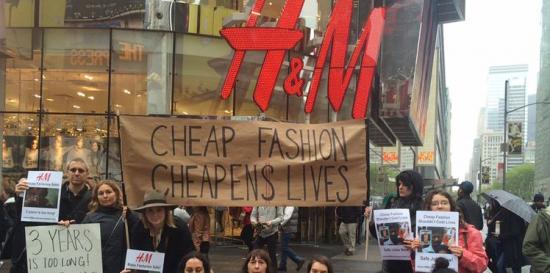
Minimum wage for workers producing goods and services intended for exportation to the USA and EU (the planned process would progressively come to include other countries that achieved comparable purchasing power, while still taking account of other economic data, such as those concerning regional dynamics).
All countries outside of the USA, EU, Russia, China and nations that already have a higher minimum wage: A single rate starting out somewhere between €250 and €350 ($300/$420) monthly, would be determined by vote by the Convention. Ambitious for some, modest for others, this first step would nonetheless represent significant social progress for a large number of workers living in countries where salaries of €50 to €80, representing just 20 to 30% of a living wage are common: particularly India, Bangladesh, Cambodia and several other countries in that region. On the African continent, remuneration is sometimes below €30. In Mexico, North Africa and Europe, salaries hovering around €100 to €150 now often constitute only 25 to 45 % of a decent income.
European Union (outside EU countries with higher minimum wage) : Creating a European minimum wage of somewhere around €600 ($720), within the EU would benefit employees working in export and would accelerate the realization of the “social Europe” that Brussels has called for, but so far failed to achieve. The many central European nations that regret the departure of large numbers of youth, who are leaving for western European countries, would greatly appreciate this opportunity to develop. A wage increase would satisfy workers in the 10 EU countries where the minimum wage is close to or below €400, without threatening those nations’ economies. For example, producing middle-market textile items would generally only cost a few dozen euro-cents more per item. On the other hand, increasing purchasing power for workers in expert services and industries could create markets with high added value within the EU, which would also sometimes be more local and respectful of the environment.
Russia: A salary close to the one recommended for the first group could be envisaged. Nevertheless, taking the country’s particularities into account, it would have a separate agreement.
China: The population is seriously affected by the environmental ravages caused by overproduction. An increasing proportion of its rich, educated inhabitants now dreams of escaping the pollution. This threat to the lives of the Chinese people is exposing Beijing to political destabilization. China could consider the advantages of more qualitative production. A Chinese minimum wage for workers in sectors exporting to the USA and EU could fall between the current manufacturing average of approximately €350 and the €600 currently in effect within the EU. A rate of €500, or $600, which would be closer to the estimated living wage in large cities, could be seen as appropriate if one considers the hourly minimum manufacturing wage of over 8 to 10 dollars or euros in the USA and many EU countries.
Francis JOURNOT - "International Convention for a Global Minimum Wage" http://www.international-convention-for-minimum-wage.org
Copyright © 2013 - 2018 - non profit NGO International Convention for a Global Minimum Wage & Francis Journot Fair Consulting - All rights reserved
Make a free website with emyspot - Signaler un contenu illicite sur ce site